Advertisements
Advertisements
प्रश्न
Two unequal resistances, R1 and R2, are connected across two identical batteries of emf ε and internal resistance r (see the figure). Can the thermal energies developed in R1 and R2 be equal in a given time? If yes, what will be the condition?
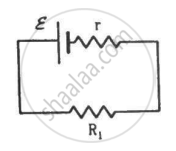

उत्तर
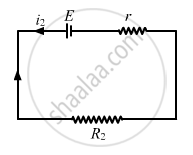
For the given time t, let the currents passing through the resistance R1 and R2 be i1 and i2, respectively.
Applying Kirchoff's Voltage Law to circuit-1, we get:-
\[\epsilon - i_1 r - i_1 R_1 = 0\]
\[ \Rightarrow i_1 = \frac{\epsilon}{r + R_1}\]
Similarly, the current in the other circuit,
\[i_2 = \frac{\epsilon}{r + R_2}\]
The thermal energies through the resistances are given by
\[i_1^2 R_1 t = i_2^2 R_2 t\]
\[ \left( \frac{\epsilon}{r + R_1} \right)^2 R_1 t = \left( \frac{\epsilon}{r + R_2} \right)^2 R_2 t\]
\[\frac{R_1}{\left( r + R_1 \right)^2} = \frac{R_2}{\left( r + R_2 \right)^2}\]
\[\frac{\left( r^2 + {R_1}^2 + 2r R_1 \right)}{R_1} = \frac{\left( r^2 + {R_2}^2 + 2r R_2 \right)}{R_2}\]
\[\frac{r^2}{R_1} + R_1 = \frac{r^2}{R_2} + R_2 \]
\[ r^2 \left( \frac{1}{R_1} - \frac{1}{R_2} \right) = R_2 - R_1 \]
\[ r^2 \times \frac{R_2 - R_1}{R_1 R_2} = R_2 - R_1 \]
\[ r^2 = R_1 R_2 \]
\[ \Rightarrow r = \sqrt{R_1 R_2}\]
APPEARS IN
संबंधित प्रश्न
State the two Kirchhoff’s rules used in electric networks. How are there rules justified?
Given n resistors each of resistance R, how will you combine them to get the (i) maximum (ii) minimum effective resistance? What is the ratio of the maximum to minimum resistance?
Given the resistances of 1 Ω, 2 Ω, 3 Ω, how will be combine them to get an equivalent resistance of (11/3) Ω?
State Kirchhoff's rules for an electric network. Using Kirchhoff's rules, obtain the balance condition in terms of the resistances of four arms of Wheatstone bridge.
Consider the following two statements:-
(A) Kirchhoff's junction law follows from conservation of charge.
(B) Kirchhoff's loop law follows from conservative nature of electric field.
Find the circuit in the three resistors shown in the figure.
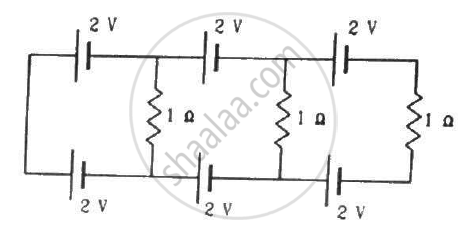
Consider the circuit shown in the figure. Find (a) the current in the circuit (b) the potential drop across the 5 Ω resistor (c) the potential drop across the 10 Ω resistor (d) Answer the parts (a), (b) and (c) with reference to the figure.
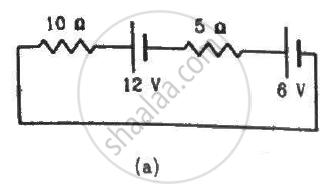
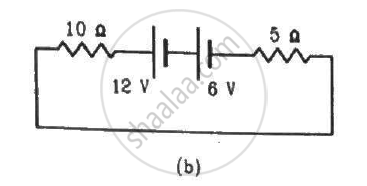
Find the equivalent resistances of the networks shown in the figure between the points a and b.
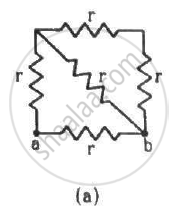
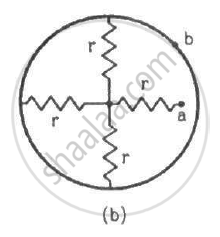
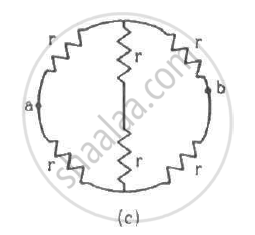
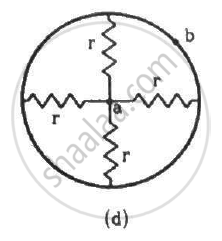
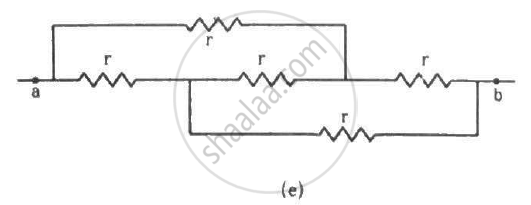
Solve the following question.
Using Kirchhoff’s rules, calculate the current through the 40 Ω and 20 Ω resistors in the following circuit.

State the principle of potentiometer.
State and explain Kirchhoff’s rules.
A copper wire of 10-6 m2 area of cross-section, carries a current of 2 A. If the number of electrons per cubic meter is 8 × 1028, calculate the current density and average drift velocity.
Kirchhoff’s second law is a consequence of law of conservation of ______.
The e.m.f of The battery in a thermocouple is doubled. The rate of heat generated at one of the junction will.
The figure below shows current in a part of electric circuit. The current I is ______.
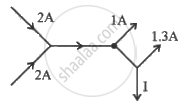
Three resistors having resistances r1, r2 and r3 are connected as shown in the given circuit. The ratio `i_3/i_1` of currents in terms of resistances used in the circuit is: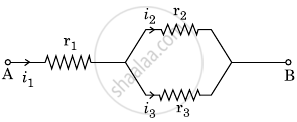
Kirchhoff’s junction rule is a reflection of ______.
- conservation of current density vector.
- conservation of charge.
- the fact that the momentum with which a charged particle approaches a junction is unchanged (as a vector) as the charged particle leaves the junction.
- the fact that there is no accumulation of charges at a junction.
The value of current in the 6Ω resistance is ______.

